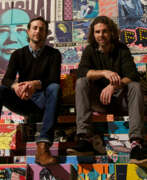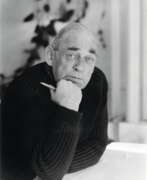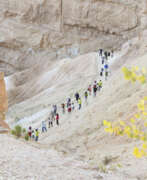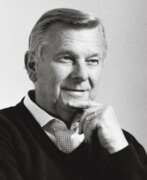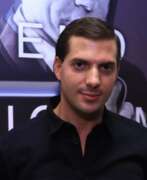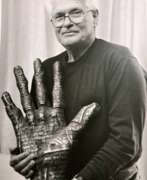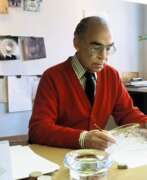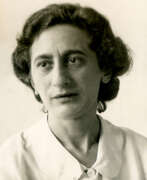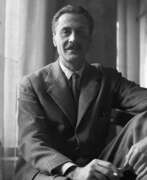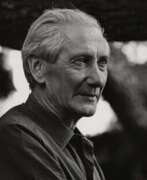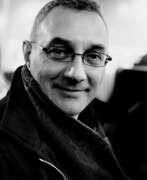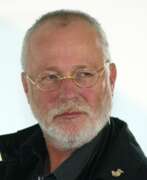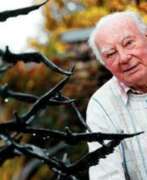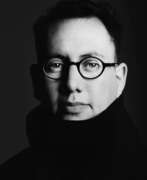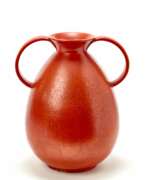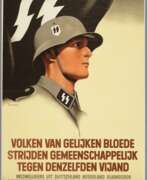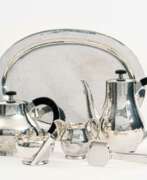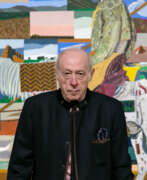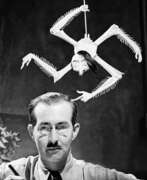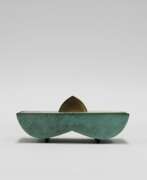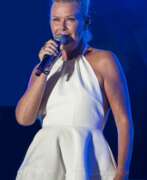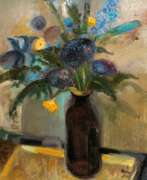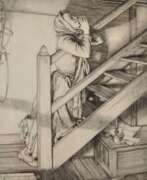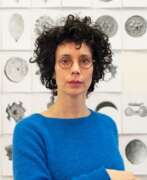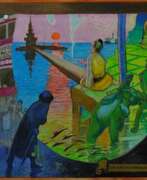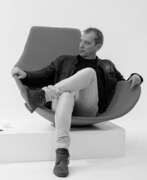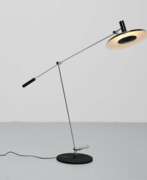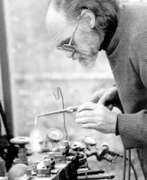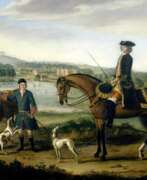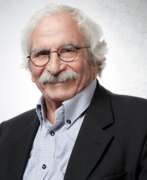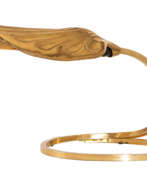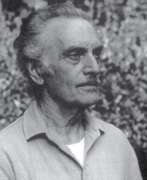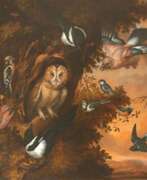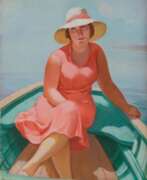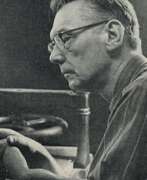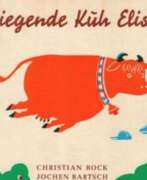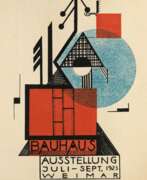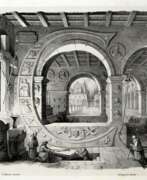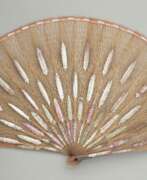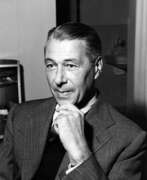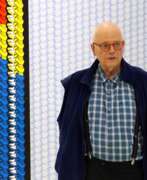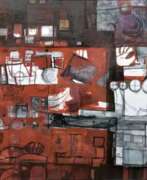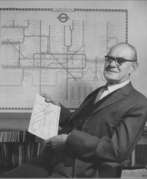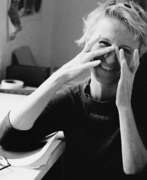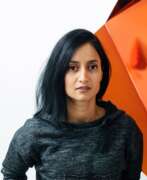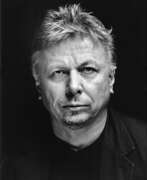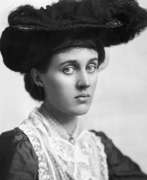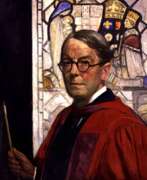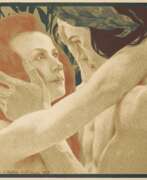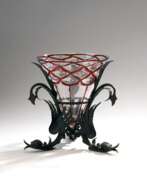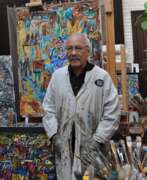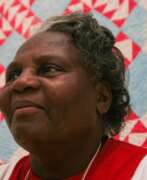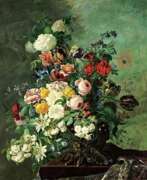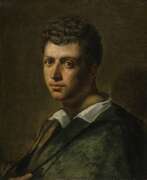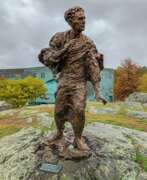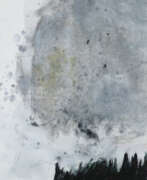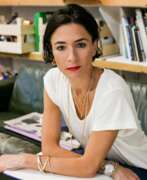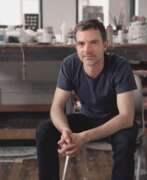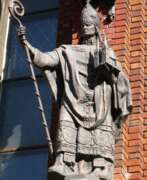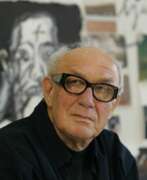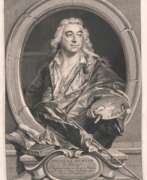Designers
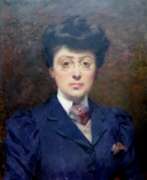

Louise Abbéma was a French painter, sculptor, and designer, celebrated for her work during the Belle Époque. Born in Étampes in 1853 into an affluent Parisian family, she became well known for her portraits, particularly of the famous actress Sarah Bernhardt, and for decorative panels commissioned for various public buildings in Paris and the Palace of the Governor in Dakar, Senegal.
Abbéma's art often depicted the upper echelons of French society and reflected the Impressionist style through her light and rapid brushstrokes. She was also notable for her involvement in the women's movement, where she contributed to the emerging image of the 'New Woman' by portraying androgynous figures and themes of intellectualism and freedom.
Among her many honors, Abbéma was awarded the Palme Academiques in 1887, nominated as the Official Painter of the Third Republic, and in 1906, she became a Chevalier of the Legion of Honour. Her works, such as "Lunch in the Greenhouse" and "Portrait of Sarah Bernhardt," have seen a resurgence in popularity as the contribution of women to historical art gains more recognition.
For those interested in the evocative and historically rich artworks of Louise Abbéma, consider subscribing to our updates. We'll keep you informed about new sales, auctions, and exhibitions featuring Abbéma's work, ensuring you're always connected to the latest offerings in the art and antique collectors' sphere.
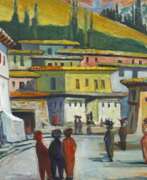

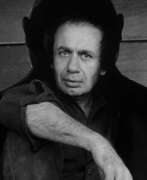

Vito Acconci was an American artist, designer, and architect. He is best known for his pioneering work in the field of performance art and for his provocative installations that explore the relationship between the human body and space.
Acconci received a Bachelor of Arts degree from Holy Cross College in 1962. He later earned a Master of Fine Arts degree from the University of Iowa.
In the late 1960s and early 1970s, Acconci became known for his groundbreaking performance works, which often involved the artist subjecting his own body to various forms of physical and psychological stress.
In the 1980s and 1990s, Acconci shifted his focus to installation art, creating immersive environments that challenged viewers' perceptions of space and their own bodies. He also worked as a designer and architect, creating public sculptures and buildings around the world.
Acconci's work has been exhibited in major museums and galleries worldwide, including the Museum of Modern Art in New York and the Venice Biennale. He received numerous awards and honors for his contributions to contemporary art, including the Skowhegan Medal for Sculpture in 1995.
His legacy as an influential and provocative artist continues to be felt in the contemporary art world today.
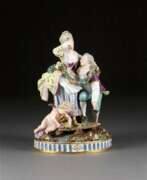

Michel Victor Acier was a French porcelain sculptor and model-maker who worked at the famous Saxon porcelain manufactory in Meissen from 1765 to 1779. With his work in the activities of the manufactory is associated with the period of neoclassicism. Michel-Victor was the maternal great-grandfather of the composer Pyotr Ilyich Tchaikovsky.
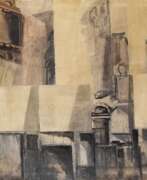

Peter Ackermann was a German painter and graphic artist. He became known for his alienation of architectural subjects. Ackermann was a representative of fantastic realism. The preferred subject of his work was classical Italian architecture, which he drew on site. He put together columns, portals and walls with machine parts, ruins and desolate parts of the city, which were piled up threateningly and thus alienated. In his etchings he showed references to the techniques of the old masters, his pictorial conception is compared with that of Giovanni Battista Piranesi and Canaletto.
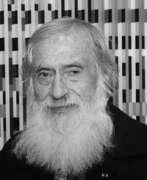

Yaacov Agam, an Israeli kinetic and optical artist born on May 11, 1928, is celebrated for revolutionizing the visual arts with his dynamic and interactive creations. Agam's pioneering work extends beyond traditional static art forms, inviting viewers into a transformative experience that changes with perspective and movement. His art, deeply rooted in his Jewish heritage and mysticism, eschews representational imagery for abstract, geometric forms and vibrant colors, engaging the observer's perception to complete the visual experience.
Notably, Agam's contributions to kinetic art have not only garnered him international acclaim but also led to his works commanding the highest prices among Israeli artists at auction. His innovative "Agamographs" use lenticular printing to create illusions of depth and motion, highlighting his fascination with the interplay between art, viewer, and the temporal dimension. Agam's significant exhibitions include retrospectives at the Musée National d'Art Moderne in Paris and the Guggenheim Museum in New York. His achievements are further recognized through multiple awards and the establishment of the Yaacov Agam Museum of Art in his hometown of Rishon LeZion, Israel, dedicated to his vision of art in motion.
For collectors and art and antiques experts, Agam's work represents a profound exploration of perception, time, and spirituality, offering a unique and engaging experience. His art invites us to see beyond the visible, reminding us of the ever-changing nature of reality and our active role in its perception. To stay updated on new product sales and auction events related to Yaacov Agam, sign up for updates and immerse yourself in the dynamic world of one of the most influential modern artists.


Craig Alan is an American artist whose work displays a technical sophistication as well as a rich imagination.
After moving with his family to New Orleans, Alan worked as a street artist in his youth, creating portraits. Through his exceptional talent and through his own research, he eventually developed an admirable understanding and sense of textures, compositions and colors. Today, Craig Alan represents a wide range of artistic styles, from book illustration to naturalistic oil painting and his Populus Art.
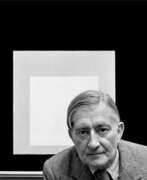

Josef Albers was a German-born artist and educator. The first living artist to be given a solo shows at MoMA and at the Metropolitan Museum of Art in New York, he taught at the Bauhaus and Black Mountain College, headed Yale University's department of design, and is considered one of the most influential teachers of the visual arts in the twentieth century.
As an artist, Albers worked in several disciplines, including photography, typography, murals and printmaking. He is best known for his work as an abstract painter and a theorist. His book Interaction of Color was published in 1963.
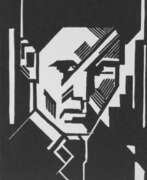

Wobbe Alkema is a Dutch artist, graphic artist, architect, designer and sculptor. He is known for his abstract and geometric works, often combining elements of constructivism and De Stijl.
Alkema was trained as an architect and then turned to art, studying at the Academy of Fine Arts in Groningen. In the 1920s he was involved with the artist collective De Ploeg, which was active in the northern Netherlands and promoted modernist art and culture.
Throughout his career, Alkema continued to explore the principles of abstraction and geometry in his work. His paintings often feature simple geometric shapes such as squares, circles and triangles arranged in complex compositions that suggest movement and depth. He was also interested in the interaction of colour, using bright, bold hues to create dynamic contrasts and harmony.
In addition to painting, Alkema created a number of sculptural works, including abstract reliefs and freestanding sculptures. He also designed furniture and other functional objects, applying his principles of abstraction and geometric form to everyday objects.
Alkema's work is held in the collections of several museums in the Netherlands, including the Groninger Museum and the Amsterdam Stedelijk Museum. He is considered an important figure in the development of abstract art in the Netherlands, and his work continues to be admired for its innovative use of form and colour.
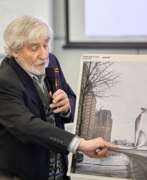

Valery Vladimirovich Androsov (Russian: Валерий Владимирович Андросов) is a Soviet and contemporary Russian artist. He is known as a sculptor, architect, designer, painter, graphic artist and teacher.
Valery Androsov creates landscapes, still lifes and portraits, as well as fantasy works. He is also known as the author of a large collection of ex-libris that accurately convey the character and interests of book owners. At different periods he served as chief artist of the Mosstroiplastmass Combine and director of the Mytishchi Picture Gallery. He also created monuments to those who died in the Great Patriotic War and to the pilots of the Mytishchi Aero Club, showing his skill in various artistic directions.
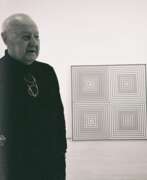

Richard Joseph Anuszkiewicz was a prominent American artist celebrated for his foundational contributions to the Op Art movement. Born in Erie, Pennsylvania, to Polish immigrant parents, Anuszkiewicz's early talent in art earned him scholarships, leading to his studies at the Cleveland Institute of Art and later, the Yale University School of Art and Architecture under Josef Albers. Albers, a pivotal figure in his career, inspired Anuszkiewicz to explore the intricacies of color and geometric forms, steering him away from realism towards a more abstract and mathematical approach to art.
Anuszkiewicz gained prominence in the 1960s, notably through his participation in the landmark exhibition "The Responsive Eye" at MoMA, which played a crucial role in propelling Op Art into mainstream recognition. His works, characterized by vibrant colors and geometric patterns, create illusions of depth and movement, challenging viewers' perceptions and offering a mesmerizing visual experience. His technique was not just about the visual impact; it was a meticulous, mathematical exploration of color and form, aiming to achieve a 'very, very mechanistic geometry' that was nonetheless romantic in its precision and purity.
Throughout his career, Anuszkiewicz's art evolved, yet he remained faithful to his intellectual and analytical approach, focusing on the optical effects of color and shape. His contributions extended beyond painting to include printmaking and sculpture, showcasing his versatility as an artist. Notably, his works are housed in prestigious collections around the world, including the Metropolitan Museum of Art, Museum of Modern Art, and the Whitney Museum of American Art, among others.
For collectors and experts in art and antiques, Anuszkiewicz's work embodies the confluence of scientific precision and artistic expression, offering insights into the profound impact of color and form on human perception. His legacy continues to inspire and challenge the boundaries of visual art.
If you're captivated by the transformative power of Op Art and the pioneering work of Richard Joseph Anuszkiewicz, sign up for updates. Stay informed about new product sales and auction events related to this remarkable artist's oeuvre, enriching your collection with pieces that resonate with history and innovation.
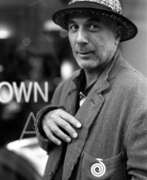

Ron Arad (Hebrew: רון ארד) is a contemporary Israeli-born artist, architect, and designer known for his innovative and boundary-pushing creations.
Throughout his career, Arad has explored various materials and techniques, embracing both handcrafted and technological processes. His designs often blur the boundaries between art and design, challenging conventional notions of form and function. Arad's furniture pieces are characterized by their sculptural qualities, organic shapes, and a sense of fluidity.
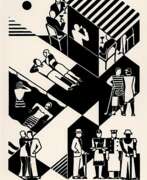

Gerd Arntz was a 20th-century German artist known for his skillful woodcut prints. A member of the Cologne Progressives—a group concerned not just with social and political issues, but also with the public’s ability to understand these concepts—Arntz sought to use his art as a method of delivering crucial information to the masses. Over the course of his life, he designed approximately 4,000 pictograms known as ISOTYPEs, or International System of Typographic Picture Education, a unique form of symbolized data from industries, politics, and economic phenomena intended for use by those who could not read.
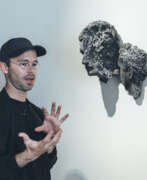

Daniel Arsham is an American artist and sculptor, co-founder and partner of the design firm Snarkitecture. Lives and works in New York. His projects include collaborations with James Franco, Hajime Sorayama, Merce Cunningham, Heidi Slimane and Pharrell Williams. He has also done commissions for brands such as Calvin Klein and Louis Vuitton.
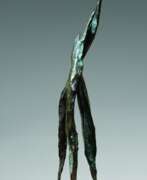

Helen Ashbee is a British artist, sculptor and jeweller. Daughter of renowned architect, designer and social reformer Charles Robert Ashbee.
Helen Ashbee was a textile designer and after the death of her husband, Italian painter Francesco Cristofanetti, she finds her real business in Paris - 'abstract sculpture' and related jewellery, for which she always did many preparatory drawings.


Erik Gunnar Asplund was a Swedish architect, mostly known as a key representative of Nordic Classicism of the 1920s, and during the last decade of his life as a major proponent of the modernist style which made its breakthrough in Sweden at the Stockholm International Exhibition (1930). Asplund was professor of architecture at the Royal Institute of Technology from 1931. His appointment was marked by a lecture, later published under the title "Our architectonic concept of space." The Woodland Crematorium at Stockholm South Cemetery (1935-1940) is considered his finest work and one of the masterpieces of modern architecture.
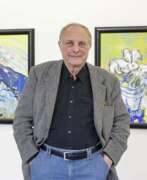

Christian Ludwig Attersee, born Christian Ludwig, is an Austrian media artist living in Vienna and Semmering in Lower Austria.
The artist took his middle name, Attersee, from the area where he spent his youth. He studied at the Vienna Academy of Applied Arts and his work was characterized early on by flamboyant sexualization. He is known not only as a visual artist, but also as a musician, writer, object artist, designer, stage designer and film director. In the 1960s and 1970s he also created series on themes of food, everyday objects, beauty and cosmetics.
Attersee is known above all as one of the leading representatives of objective painting in Europe in the last 50 years. In the second half of the seventies he became the founder of the "New Austrian Painting". From 1990 to 2009, Atterse held a chair at the Vienna University of Applied Arts.
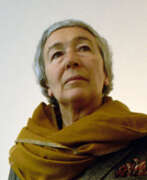

Gaetana (Gae) Aulenti was an Italian architect and designer who was active in furniture design, graphic design, stage design, lighting design, exhibition and interior design. She was known for her contributions to the design of important museums such as the Musée d'Orsay in Paris (in collaboration with ACT Architecture), the Contemporary Art Gallery at the Centre Pompidou in Paris, the restoration of Palazzo Grassi in Venice, and the Asian Art Museum of San Francisco (in collaboration with HOK Architects). Aulenti was one of only a few women architects and designers who gained notoriety in their own right during the post-war period in Italy, where Italian designers sought to make meaningful connections to production principles, and influenced culture far beyond Italy. This avant-garde design movement blossomed into an entirely new type of architecture and design, one full of imaginary utopias leaving standardization to the past.
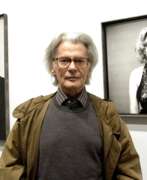

Richard Avedon was an American photographer and artist known for his iconic portraits and fashion photography.
Avedon began his career as a photographer in the late 1940s, working as a freelance photographer for magazines such as Harper's Bazaar and Vogue. He soon became known for his distinctive style, which was characterized by his use of simple, uncluttered backgrounds and his ability to capture the essence of his subjects.
Throughout his career, Avedon photographed some of the most famous people of his time, including Marilyn Monroe, Andy Warhol, and The Beatles. He was also known for his fashion photography, and his work appeared in many fashion magazines, including Harper's Bazaar and Vogue.
Avedon's work was often controversial, as he challenged traditional notions of beauty and fashion. He was known for his willingness to push boundaries, and his work was often seen as a reflection of the social and political issues of his time.
Today, Avedon is regarded as one of the most important photographers of the 20th century, and his work continues to inspire artists and photographers around the world.


Hermann Bachmann is a German artist, graphic designer and teacher.
Hermann studied at the School of Applied Arts Offenbach am Main and served in the army during World War II. In 1945, Bachmann returned to his hometown and joined the artists of the Halle School. And in 1953 he fled to West Berlin, whose creative atmosphere was closer to him.
In 1957 Hermann Bachmann became a teacher and later a professor at the University of Fine Arts in Berlin, among his students many famous artists. He was a member of the Association of German Artists.
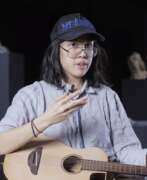

Trisha Baga is an American artist working in various media, including video installations, sculpture, painting and audio installations. She is known for her experiments with technology and often uses voice and body in her work.
Her work is often interactive and a combination of different elements such as projections, sounds, objects and movement. She is also known for her use of private elements such as mobile phones to create unique and personal works of art.
Trisha Baga draws on the heritage of sculpture, painting, music, photography and literature in her practice. Among the subjects and themes she explores are contemporary events, the worship of heroes and celebrities, and collective history. Baga's installations often include film, consisting of montages and collages of found footage and photographs, stacked in such a way that some images obscure others; the films are projected directly onto the wall, over personal items and rubbish from her studio so that they cast shadows on the projection.
Her work has been exhibited in many museums and galleries around the world, including the Museum of Modern Art in Los Angeles, the Museum of Modern Art in New York and the Venice Biennale.
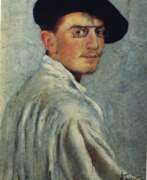

Leon Bakst (Russian: Лев Самойлович Бакст) was a prominent Russian painter and stage designer, celebrated for his innovative contributions to the world of art and theater. Born in the late 19th century, Bakst became a central figure in the cultural renaissance that swept through Russia and Europe, leaving an indelible mark on the visual and performing arts.
Bakst's work is distinguished by its rich use of color, intricate patterns, and imaginative compositions, which brought to life the exotic and often fantastical themes of the ballets and operas for which he designed. His association with the Ballets Russes, a groundbreaking ballet company that performed across Europe and America, solidified his reputation as a visionary artist. The costumes and sets he created for productions like "The Firebird" and "Scheherazade" were celebrated for their creativity and exoticism, influencing not only the world of theater but also fashion and interior design.
His art extends beyond the stage, with paintings and illustrations that capture the same vibrancy and innovation found in his theatrical work. Museums and galleries around the world, including the State Russian Museum in St. Petersburg and the Metropolitan Museum of Art in New York, house his works, allowing art lovers to experience the magic of Bakst's creations.
For collectors and experts in art and antiques, Leon Bakst's work offers a unique glimpse into a transformative period of cultural history, where the boundaries of art and performance were reimagined. His legacy continues to inspire and captivate, making his pieces highly sought after in the art world.
We invite enthusiasts and collectors to sign up for updates on new product sales and auction events related to Leon Bakst. This subscription ensures you remain informed about opportunities to acquire pieces connected to this extraordinary artist's legacy, without any overbearing commitments. Join us in celebrating the enduring impact of Leon Bakst's art and design.
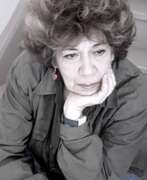

Margit Balla is a Hungarian artist, graphic artist, illustrator, director, stage designer and costume designer.
She studied typography at the Academy of Applied Arts in Budapest, mainly making posters, book illustrations, later working more and more with pictorial graphics. In her posters Margit Balla combines impressions from old prints with contemporary trends such as pop art. Her figurative compositions are easily recognizable by her special surrealistic drawing style.
Since 2000, Margit Balla has been working as a production designer for the Budapest Puppet Theater.


Vladimir Davidovich Baranov-Rossine (Russian: Владимир Давидович Баранов-Россине) was a master of the Russian avant-garde, a prolific painter, sculptor, and inventor, whose work significantly contributed to the Cubo-Futurism movement. Born on January 1, 1888, in Kherson, he was originally named Shulim Wolf Leib Baranov but is best known by his pseudonym, Daniel Rossine. His early artistic education took place in Odessa and then at the St. Petersburg Academy of Arts, laying the groundwork for his future as a revolutionary artist.
In 1910, Baranov-Rossine moved to Paris, a pivotal move that introduced him to the burgeoning European avant-garde scene. It was there, alongside other notable artists such as Marc Chagall, Osip Zadkine, Alexander Archipenko, and Chaim Soutine, that he became an inhabitant of the famous Parisian house "La Ruche." His innovative work, particularly the invention of the Optophonic Piano, which projected colors in sync with music, underscored his commitment to blending art and technology, a hallmark of his career.
Tragically, Baranov-Rossine's life was cut short when he was arrested by the Gestapo in 1943 and subsequently died in Auschwitz in 1944. Despite his untimely death, his legacy lives on through his contributions to modern art and technology. His works can be found in various museums and galleries, celebrated for their vibrant expression and avant-garde techniques that continue to inspire artists and collectors alike.
For those intrigued by Vladimir Davidovich Baranov-Rossine's pioneering work and its lasting impact on the art world, signing up for updates on new product sales and auction events related to this avant-garde master is highly recommended. This ensures enthusiasts and collectors are always informed about the latest opportunities to engage with Baranov-Rossine's remarkable legacy.
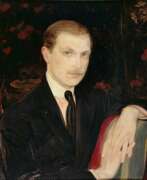

George Barbier was a French artist and illustrator, fashion designer, who influenced the development of the Art Deco movement.
George Barbier studied painting at the École Nationale Supérieure des Beaux-Arts in Paris. Initially he worked as an illustrator for several famous Parisian fashion magazines, and gradually his drawings began to define the style of women's clothing. The emergence of the Art Nouveau style moved Barbier to create luxurious fashions for cabarets, theaters, and movies. He depicted extravagant theatrical costumes with sparkling rhinestones, high headdresses and huge plumes. Barbier created stage costume designs for Diaghilev's famous Russian Ballet.
He also illustrated catalogs and many literary works, including works by Charles Baudelaire and P. Verlaine, and was an author and designer of jewelry.
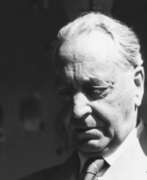

Ercole Barovier is an Italian glass artist and designer.
In 1936 he founded Ferro Toso Barovier together with his brothers Dezio and Artemio Toso, which became Barovier — Toso & Co. in 1939 and Barovier & Toso in 1942.
He was also artistic director of the glassworks until 1972.
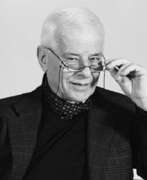

Carlo Bartoli is an Italian architect and designer. Author of numerous projects, such as the Gaia chair, included in the permanent design collection of the MoMA in New York and the Milan Triennale Design Museum, and the 4875 chair for Kartell, the world's first made of polypropylene, as well as part of the design collection of the Pompidou Center in Paris.
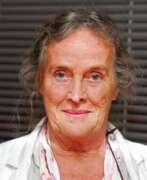

Mary Hildegard Ruth Bauermeister was a German artist who worked in sculpture, drawing, installation, performance, and music. Influenced by Fluxus artists and Nouveau Réalisme, her work addresses esoteric issues of how information is transferable through society. Beginning in the 1970s, her work concentrated on the themes surrounding New Age spirituality, specifically geomancy, the divine interpretation of lines on the ground.
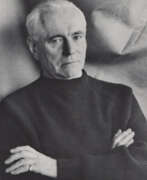

Marcel-Louis Baugniet was a Belgian painter, theorist, furniture designer, creator of posters, costumes and stage sets, and one of the main advocates of the concept of pure plasticity.
He studied painting at the Royal Academy of Fine Arts in Brussels, where he communicated with Paul Delvaux, René Magritte, Victor Servranck and Pierre-Louis Flouquet.
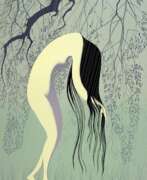

Marcus Behmer, full name Marcus Michael Douglas Behmer, known by the pseudonyms Marcotino und Maurice Besnaux, is a German artist, graphic designer and illustrator.
Marcus was the son of the painter Hermann Behmer, participated in World War I and painted miniature portraits of fellow soldiers. From 1900 he began to collaborate with Munich periodicals and book publishers. Bemer drew hundreds of drawings and illustrations and published a series of engravings that were recognized and successful. He also designed typefaces.
In 1936, Behmer was convicted of homosexuality and spent a year and a half in prison, where the artist also found the strength to draw. During World War II, almost all of Bemer's creations were lost or destroyed.
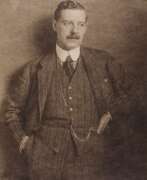

Peter Behrens was a seminal figure in modern design and architecture, heralded as the first industrial designer and a pioneer in modernist architecture. Born in Hamburg, Germany, Behrens's influence spanned across various domains, including architecture, industrial design, and graphic design. His holistic design approach was revolutionary, encompassing everything from architectural projects to corporate identities.
Behrens's association with AEG (Allgemeine Elektrizitäts-Gesellschaft) marked a significant chapter in his career. Hired as an artistic consultant in 1907, he crafted a comprehensive corporate identity for AEG, including the iconic AEG Turbine Factory (1909), a hallmark of industrial classicism and modernism. This work is celebrated for its pioneering approach to industrial architecture and design, integrating form and function with unprecedented clarity and coherence.
His architectural ventures displayed a versatility and an evolution of style, from the monumental, stripped classical form seen in the German Embassy in St Petersburg (1912) and the Administration Building for Continental AG in Hannover (1912-1914), to the expressive Brick Expressionism of the Technical Administration Building of Hoechst AG in Frankfurt (1920-1924). Behrens's work in the 1920s, including the design for the 'New Ways' house in Northampton, UK, and contributions to the Weissenhof Estate in Stuttgart, underscored his shift towards New Objectivity and modernist principles.
Moreover, Behrens's educational contributions were profound, with his teaching stints at the Academy of Fine Arts Vienna influencing a new generation of architects, including luminaries such as Ludwig Mies van der Rohe, Le Corbusier, and Walter Gropius, who would themselves go on to define the course of 20th-century architecture.
Behrens's legacy is a testament to the transformative power of design, illustrating how integrated and forward-thinking approaches can redefine our built environment and the objects we use daily. His work remains an essential study for collectors, experts in art and antiques, and anyone interested in the evolution of modern design and architecture.
For updates on exhibitions and auctions featuring Peter Behrens's work, sign up for our newsletter. Stay informed about new discoveries, sales, and events related to this pivotal figure in modern architecture and design.
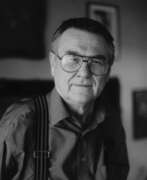

Zdzisław Beksiński was a Polish painter, photographer, and sculptor, specializing in the field of dystopian surrealism.
Beksiński made his paintings and drawings in what he called either a Baroque or a Gothic manner. His creations were made mainly in two periods. The first period of work is generally considered to contain expressionistic color, with a strong style of «utopian realism» and surreal architecture, like a doomsday scenario. The second period contained more abstract style, with the main features of formalism.
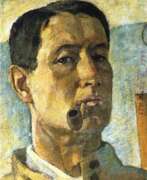

Veniamin Pavlovich Belkin (Russian: Вениамин Павлович Белкин), a distinguished Russian and Soviet artist, was born in 1884 and made significant contributions to the fields of painting, graphic arts, and teaching until his death in 1951. His extensive teaching career included positions at prestigious institutions such as the Higher Institute of Photos and Photo Equipment, the Baron A.L. Stieglitz Central School of Technical Drawing, Vhuteine, the State Architectural Institute, and the Leningrad Institute of Painting, Sculpture, and Architecture named after Ilya Repin. In 1955, a memorial exhibition in Leningrad posthumously honored his artistic legacy.
Belkin's artworks, characterized by their depth and artistic integrity, are held in high regard within major museum collections, including the State Tretyakov Gallery and the State Russian Museum, as well as various regional museums. His contributions to Russian art are celebrated for their historical and cultural significance, bridging the gap between pre-revolutionary and Soviet art.
For collectors and experts in art and antiques, Belkin's work represents an intriguing investment, embodying the rich tapestry of Russian history and culture. His legacy continues to inspire and influence contemporary art, making his pieces sought after by connoisseurs around the world.
Sign up for updates to stay informed about new product sales and auction events related to Veniamin Pavlovich Belkin, and enrich your collection with the works of one of Russia's most venerable artists.
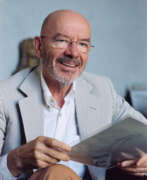

Mario Bellini is an Italian architect and designer. After graduating from the Polytechnic University of Milan in 1959, Bellini pursued a career as an architect, exhibition designer, product designer, and furniture designer, during the Italian economic boom of the late 20th century. Bellini has received several accolades in a variety of design fields, including eight Compasso d'Oro awards, and the Gold Medal for Lifetime Achievement by the Triennale di Milano. In 2019, the Italian President of the Chamber of Deputies, Roberto Fico, awarded Bellini a career medal, in recognition of his contributions to Italian architecture and design.


Suzanne Belperron was an influential 20th-century jewellery designer based in Paris. She worked for the Boivin and Herz jewellery houses before the outbreak of World War II. Subsequently, she took over the Herz company, renaming it Herz-Belperron. Belperron had many important client, from royalty, arts and show business on both sides of the Atlantic.


Gerald Adrian Sallis Benney was a British silver and goldsmith who along with David Mellor and Robert Welch popularised stainless steel designs in post-war British homes. Like Mellor and Welch he was influenced by modern Scandinavian design and in particular Georg Jensen.


Sadie T. Benning is an American artist, who has worked primarily in video, painting, drawing, sculpture, photography and sound. Benning creates experimental films and explores a variety of themes including surveillance, gender, ambiguity, transgression, play, intimacy, and identity. They became a known artist as a teenager, with their short films made with a PixelVision camera that have been described as "video diaries".


Christian Bérard, also known as Bebè, was a French artist, fashion illustrator and designer.
Bérard and his lover Boris Kochno, who worked for the Ballets Russes and was also co-founder of the Ballets des Champs-Elysées, were one of the most prominent openly homosexual couples in French theater during the 1930s and 1940s.


Igor Borisovich Berezovsky was a Soviet and Russian artist, graphic artist and designer.
Igor Berezovsky was interested in the texture of television images; he reproduced magazine photographs and brought them to the brink of extinction with the help of large screen prints; he introduced unexpected textures into images using all kinds of "rubbish"; he paraphrased Folon and Dibbets, Warhol and Dürer.
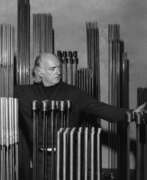

Harry Bertoia was an American artist, sculptor and furniture designer of Italian origin. He is best known for his innovative metal sculptures and iconic furniture designs.
In the 1940s and 1950s, Bertoia worked with Charles and Ray Eames in the moulded plywood division of Evans Products Company. It was at this time that he began experimenting with wire as a medium for sculpture and furniture design. The Bertoia Diamond wire mesh chair, introduced in 1952, was one of his most iconic and influential designs. Made by bending and welding wire, the chair combined aesthetic appeal with comfort and functionality.
In his sculptural work, Bertoia often created complex and abstract forms using metal rods and wire. He explored the sonic properties of his sculptures, which led to the creation of his famous 'Sounding Sculptures' series. These large-scale metal sculptures produced ethereal sounds when touched or exposed to the wind.
